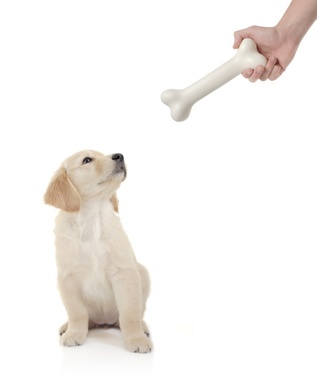Tips for Dog Mating and Breeding
Dog mating is something that some dog owners can get very excited about especially as it is the best way to bring home more cuddly puppies.
However, as a true dog lover, you should know that mating your dogs is an essential part of your dog's life cycle and should be approached in a rational way.
The decision to mate breed your dogs must be something that is well thought out and planned.
Proper care and the safety of the mother and her new puppies should be the utmost priority.
The AKC recommends that when selecting a breeding partner, "mate animals
that complement one another." The goal is to choose a mate that
strengthens any weaknesses in the bitch. If the coat of a bitch isn't
good, find a mate with an excellent coat.
Other factors to consider when choosing a mate for your dog are health and temperament. Temperament is primarily hereditary (and also influenced by a dog's environment).
Dog Breeding Health and DNA Testing
In terms of genetic disease, the goal is to avoid any major canine hereditary diseases. It is now possible to use DNA tests to determine the ancestry of purebred and mixed breed dogs.
There are over 900 hereditary diseases in dogs, so breeding and mating is something to not be taken lightly. Genetic screening tests can help identify at risk dogs. Since the ability to treat hereditary disease is limited, ethically, mating dogs should be tested. Check with your veterinarian to understand how DNA testing can support your dog breeding plans.
It is also a good idea to have each dog tesed for brucellosis, a bacterial disease in dogs that can result in spontaneous abortion or sterility. Females should be tested for parasites one month before breeding.

The Dog Reproduction Cycle
As a responsible dog owner, you should first understand the reproductive cycle of your dogs before you considering mating them.
Female dogs usually have only two reproductive cycles every year, which starts at puberty. Small breed dogs commonly start their reproductive cycle at ages 5-6 months.
As for large breeds, they may not start their cycle not until they reach 2 years of age. However, the average age of puberty in dogs is about 7-10 months old.
Normally, female dogs will only stand for breeding and accept the male after 4-9 days of having blooding vaginal discharges.
After that, the receptive period may last only for a few days but can last up to as long as two weeks.
Counting from the first day the female dogs had the discharges, the most commonly used dates for breeding are days 9, 11 and 13 as these are said to produce the best conception rates.
Natural Dog Breeding
Most breeding occurs between the 10th and 14th day after the onset of proestrus (the Estrus period), the time when the bitch attracts male dog. Sometimes it is not easy to tell if a dog is in prestrus, requiring a Vet to do hormone testing or to examine vaginal smears with a microscope.
Assuming the bitch will accept the male, it is acceptable to mate every other day for 2 to 3 matings. The female is usually brought to the male, since they do not tend to mind unfamiliar places when breeding. A male will mount the female from the rear and use rapd pelvic thrusts until ejaculation.
The male and female will "tie" and stay coupled for 10 to 30 minutes. Allow the dogs to separate by themselves and helping the process could injure the dogs.
Canine Artificial Insemination
Females can also be artificially inseminated if natural breeding is not an option. If you would like to register the puppies with your country's kennel club, check with them for the rule.

Signs of Dog Pregnancy
A female dog will be pregnant for 63 days. A veterinarian will palpitate the dog (touch) or used x-rays or ultrasound to confirm pregnancy at the 28 day mark.
Signs of female dog pregnancy include:
- weight gain
- increased nipple size
- increased appetite
Dog Mating Ethics
It is true that many people want to breed their dogs to have more puppies.
However, there are also a lot of professional breeders who, ultimately,
breed dogs for money. That is OK as long as the welfare of the dogs is
of top priority that dog owners have to keep in mind.
However, there are those dog owners who own dogs solely for profit purposes and enslave them to breed without giving them proper attention and love that they deserve. This should never be condoned and should never be tolerated.
The very first thing to consider when deciding to breed dogs is to make sure the dogs are treated well.
Another issue that is involved in the ethics of dog mating is the breeding of very young dogs.
Young dogs are still not capable of baring puppies because their reproductive system and their body are still not ready physically.
The dogs need to be completely mentally and physically mature before starting to breed them.
If dogs are not bred properly, the tendency would be that they may bare puppies with health problems.
This happens when dog owners, for whatever purposes, breed their dogs too quickly. It is always wise to know the typical genetic diseases that a particular breed of dog has before breeding them.
If they indeed have serious health problems that can be passed on to the puppies, then they should not be breed from..
If you are really serious about dog mating, either for profit or for your own use, remember that you are the one in control and you are responsible for the progeny of your dogs.
Breeders have to care about each puppy that you bring into this world.
Free Dog Mating PDF eBook
Download this free dog mating and breeding guide from the American Kennel Club (PDF). It is filled with tips and information on how to successfully mate, breed and register your new puppies with the Kennel Club.
For More Reading on Dog Mating:
Breeding and How to Mate Your Dog - An Overview
Breeding And Canine Reproduction
Breeding Labrador Retrievers
More On Breeding Labrador Retrievers
Finding The Right Breeder
Some Issues To Address Before Breeding
Dog Mating And Breeding
Dogs In Heat
References:
Recent Advances in Hereditary Diseases and Genetic Predispositions for the Clinician
Urs Giger, Dipl. ACVIM, ECVIM-CA
School of Veterinary Medicine
University of Pennsylvania
From Canine Mating and Breeding to Labrador Retriever Guide Home